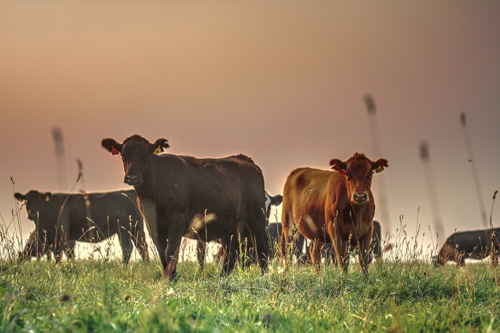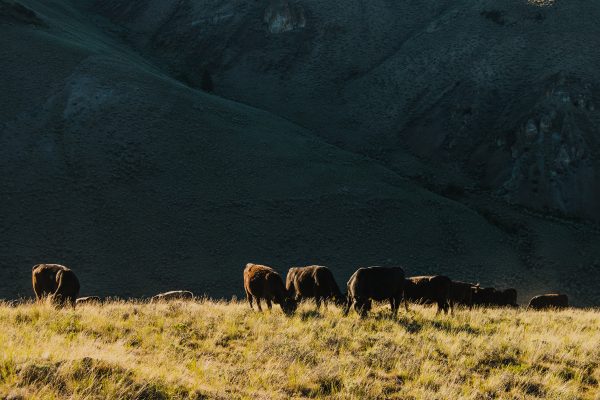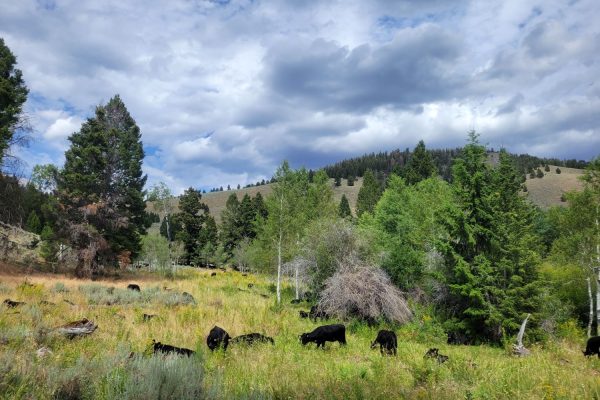Ever wonder what beef labels really mean? Legally? What is grassfed beef? Organic beef? Natural beef? How about a “grassfed organic” label (which is what Alderspring is). More and more lately, we’ve been seeing unsuspecting consumers paying a premium for a product that is really not much different, if at all, from commodity beef. Read on so you don’t get snookered.
This table reflects the minimum legal requirements of each label. Some producers may opt to meet additional standards. This list is a great starting point for conversations with your producer if you buy your beef locally. Your grass fed producer may be following most or all of the organic standards, even if they are not certified. Buy you don’t know unless you ask.
The table below contains all of the commonly used practices for commodity beef. There’s no column for commodity beef, because it would just be empty. This table also does not include a column for “natural” beef. “Natural” by USDA definition, simply means “minimally processed” which includes nearly all beef unless it is made into some processed product. To use the term “natural”Ÿ” on a food label, USDA requires adherence to only three specifications, all of which pertain to the post mortem handling/processing of beef. The USDA specifications are product:
1) must be minimally processed;
2) cannot contain any artificial ingredients and,
3) cannot contain any preservatives.
By this definition, most fresh, conventionally produced beef qualifies as natural. Some producers use additional restrictions for their definition of “natural” (like no antibiotics, no hormones) but you’ll have to look for additional information on the label, or ask questions, to find out what those restrictions are.
[table id=2 /]
*Under “grass fed” beef labels, animals may be supplemented with grain: “during times of adverse environmental conditions, an animal may receive incidental supplementation to ensure the animal’s well-being. The producer must fully document what was fed, the amount fed, the frequency of feeding. Producers should retain receipts, ingredient labels and tear tags for documentation purposes.” Without third party verification, it is not clear who evaluates this deviation.
All labels used for commerce are supposed to be approved by Food Safety Inspection Service (FSIS) and are supposed to be true. All label claims made to FSIS must include a description of the operation and justification for the label claim. Some label claims have been defined by the USDA and these claims can be verified by a third party, after which the producer can carry the USDA process verified seal. This third party verification means inspection and evaluation of validity of claims by an independent entity. This inspection occurs annually for organic claims.
Grassfed is one of those claims that has been defined by the USDA. If a producer wishes to include the words “grass fed” on the label, he/she must submit a description of their operation to support the claim of “grass fed” but does not have to submit to a third party inspection unless they wish to carry the USDA process verified seal. Although there are penalties for mislabeling products, once a label has been approved, there is little potential for following up to ensure the producer is still following the claims.
Some grass fed producers may opt to use a third party certifying entity to inspect their operation for compliance with the grass fed label requirements. These labels may then include the USDA process verified seal, and provide an additional level of assurance that the producer is following the label claims.
Additionally, there are groups that provide certification for following their standards, who will conduct inspections and then approve the producer for use of their seal or logo. The American Grassfed Association is one such certification for grass fed. Most of these organizations have more stringent requirements than the USDA does for “grass fed” production.
Grass fed, 100% grassfed, grass finished, green fed, pasture fed, pasture finished, organic, free range (which technically only applies to poultry). All of these except “organic” and “grass fed” are unregulated. We think Alderspring meets what most people think of when they consider any of these labels.








Cheo
Yup, liver with kids. I especially want my kids to eat liver bescaue ounce for ounce, liver is the most nutrient dense food we know of. Liver is rich in vitamin A, riboflavin, vitamin B6, niacin, folate, vitamin B12 as well as minerals like iron, zinc, phosphorus, manganese and selenium. I hate liver on its own but I don’t mind it grated and mixed in with other ground meat. This dirty rice is delicious! Promise!